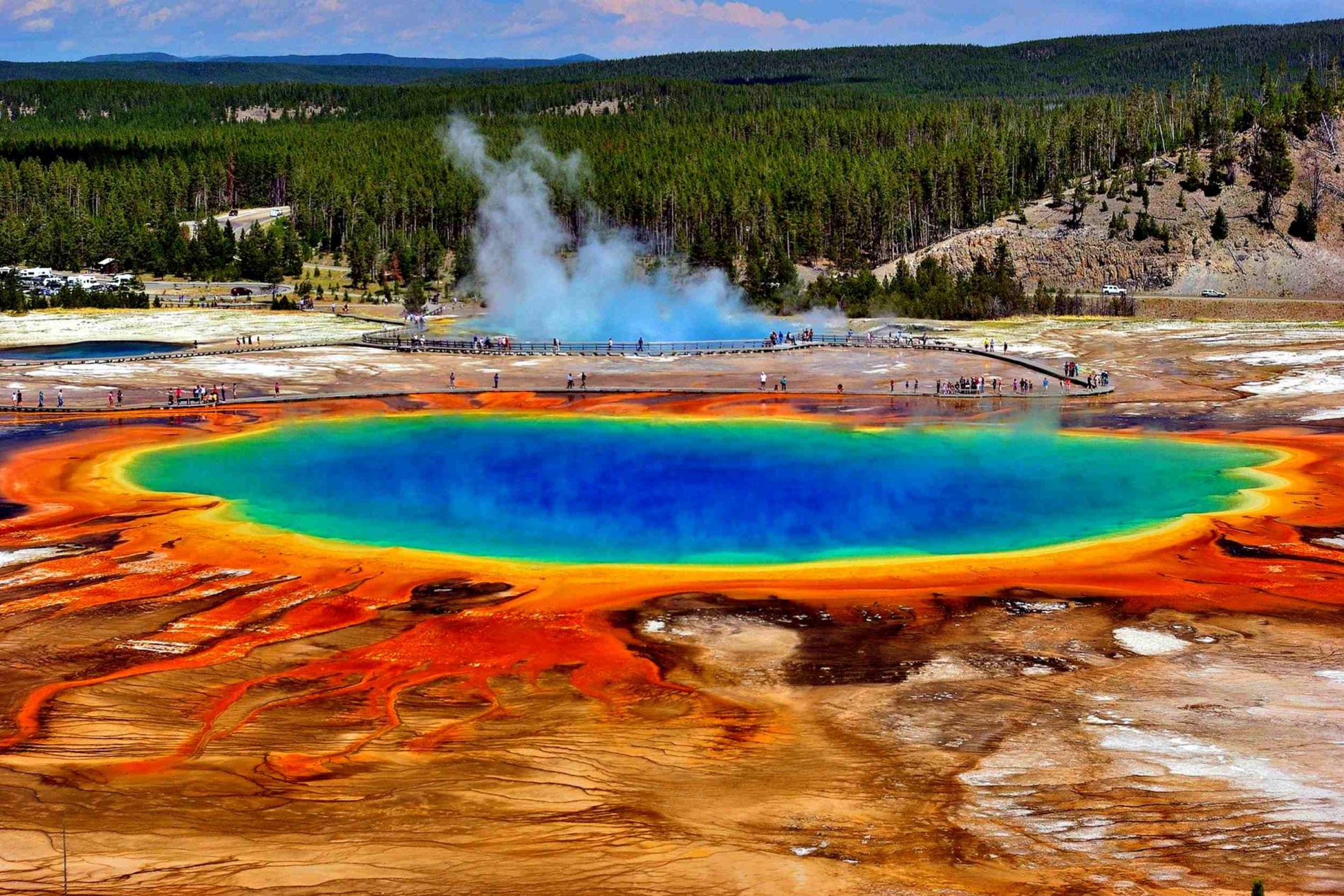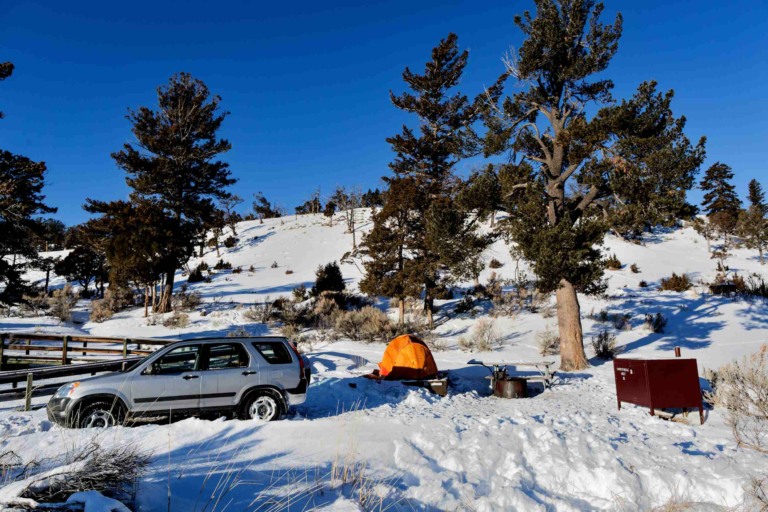Yellowstone National Park is one of the most famous and iconic national parks in the United States. It is renowned for its stunning natural beauty, geothermal features, and diverse wildlife. Here are some key facts and a brief history of Yellowstone National Park:
Yellowstone National Park Facts and History
Yellowstone National Park Facts
1. Establishment: Yellowstone National Park was established on March 1, 1872, making it the first national park in the world. It predates the National Park Service, which was created in 1916.
2. Location: The park is located primarily in the U.S. state of Wyoming, with small portions extending into Montana and Idaho. It covers an area of approximately 2.2 million acres.
3. Geothermal Features: Yellowstone is famous for its geothermal features, including geysers, hot springs, mudpots, and fumaroles. Old Faithful, one of the most famous geysers in the world, erupts at regular intervals.
4. Supervolcano: Beneath Yellowstone lies a supervolcano, which is an active volcanic system that has experienced massive eruptions in the past. Although it is monitored for signs of volcanic activity, there is no imminent threat of a catastrophic eruption.
5. Wildlife: The park is home to a wide variety of wildlife, including bison, elk, grizzly bears, wolves, and many species of birds. It is one of the last strongholds for several endangered or threatened species.
6. Scenic Beauty: Yellowstone boasts a diverse range of landscapes, including forests, canyons, rivers, lakes, and mountain ranges. The Grand Canyon of the Yellowstone is a popular scenic attraction.
7. Yellowstone Lake: It is one of the largest high-altitude lakes in North America and is known for its crystal-clear waters.
8. Visitation: Yellowstone is one of the most visited national parks in the United States, attracting millions of visitors each year.
Yellowstone National Park History
9. Native American Presence: Indigenous peoples, including the Shoshone, Crow, and Bannock tribes, have lived in the Yellowstone region for thousands of years. They regarded the area as sacred and used its resources for hunting and gathering.
10. Exploration: European Americans first explored the region in the early 19th century, with notable expeditions by John Colter and Jim Bridger. Reports of geothermal wonders and natural beauty sparked interest in preserving the area.
11. Preservation Efforts: The efforts of early explorers, as well as explorations and advocacy by individuals like Ferdinand V. Hayden, led to the idea of preserving Yellowstone as a national park.
12. Congressional Action: On March 1, 1872, President Ulysses S. Grant signed the Yellowstone National Park Protection Act, designating Yellowstone as the world’s first national park. This marked the beginning of the national park system in the United States.
13. Early Administration: Initially, the park had little administration or protection. The U.S. Army was tasked with managing and protecting the park from poaching and vandalism until the National Park Service was established in 1916.
14. Conservation and Expansion: Over the years, efforts have been made to conserve and protect the park’s unique ecosystems. Yellowstone has also expanded its boundaries to include more areas of interest and to protect wildlife corridors.
15. Ongoing Conservation: Today, Yellowstone National Park remains a symbol of conservation and is a UNESCO World Heritage Site. It continues to be a vital center for scientific research and ecological preservation.
Yellowstone National Park’s natural wonders and rich history make it a must-visit destination for nature enthusiasts, scientists, and tourists from around the world. Its unique geothermal features and diverse ecosystems make it a true treasure of the United States.
Vacation in Yellowstone National Park
A vacation in Yellowstone National Park offers a unique and unforgettable experience. Whether you’re a nature enthusiast, wildlife lover, hiker, or simply someone seeking awe-inspiring natural beauty, Yellowstone has something to offer. Here’s a guide to planning a vacation in Yellowstone:
16. Timing: The park is open year-round, but the best time to visit for most tourists is from late spring through early fall (late May to early October).
- Summer (June to August) is the busiest and warmest season, with longer daylight hours.
- Fall (September and early October) offers cooler temperatures and beautiful fall foliage.
- Winter (November to April) provides a unique and quieter experience but has limited accessibility due to snow.
17. Accommodations: Yellowstone has several lodging options, including campgrounds, lodges, cabins, and hotels. Reservations are highly recommended, especially during the peak summer season. Popular lodging areas include Old Faithful, Mammoth Hot Springs, Lake Yellowstone, and the Grand Canyon of the Yellowstone.
18. Activities:
- Geothermal Features: Explore the park’s famous geothermal features, including Old Faithful, Grand Prismatic Spring, and the Norris Geyser Basin.
- Wildlife Viewing: Keep an eye out for bison, elk, grizzly bears, wolves, and other wildlife. Lamar Valley is a hotspot for wildlife sightings.
- Hiking: Yellowstone offers a wide range of hiking trails for all skill levels. Be sure to check trail conditions and bear safety information.
- Scenic Drives: Drive along the park’s scenic roads, such as the Grand Loop Road, which connects major attractions.
- Boating and Fishing: Enjoy boating, fishing, and kayaking on Yellowstone Lake or the Yellowstone River.
- Ranger Programs: Participate in ranger-led programs and talks to learn more about the park’s natural and cultural history.
19. Safety: Follow safety guidelines, especially when it comes to wildlife encounters. Maintain a safe distance and never approach wild animals. Be aware of the park’s unique hazards, such as geothermal areas with scalding water and unpredictable thermal features. Carry bear spray and know how to use it if you plan on hiking in bear country.
20. Leave No Trace: Follow Leave No Trace principles to minimize your impact on the environment. This includes packing out all trash, staying on designated trails, and respecting wildlife and natural features.
21. Weather and Clothing: Yellowstone’s weather can be unpredictable, so dress in layers and be prepared for temperature fluctuations and sudden changes. In summer, bring sunscreen, hats, and sunglasses. In winter, ensure you have warm clothing and suitable gear.
22. Park Entrance Fees: There is an entrance fee to access Yellowstone National Park, which supports conservation and maintenance efforts. Check the official park website for current fee information.
23. Reservations and Permits: Some activities, like backcountry camping and certain guided tours, require permits or reservations. Plan ahead and check for availability.
24. COVID-19 Considerations: Be aware of any COVID-19 restrictions or safety measures in place during your visit.
Before your trip, check the official Yellowstone National Park website for up-to-date information, road conditions, and park alerts. With proper planning and a deep appreciation for nature, your vacation in Yellowstone is sure to be a memorable and enriching experience.

